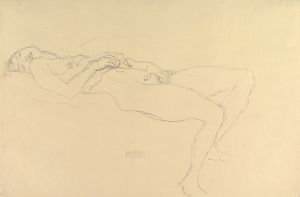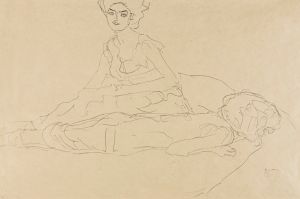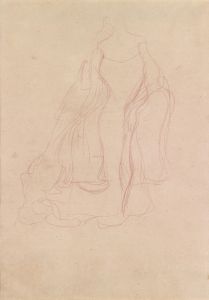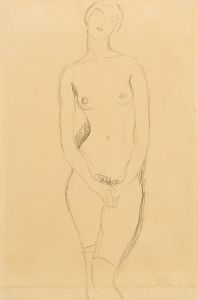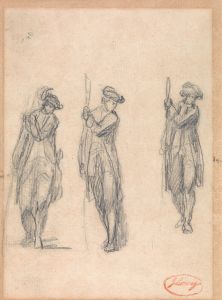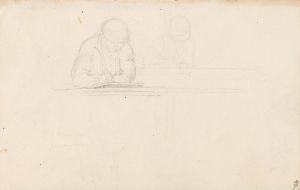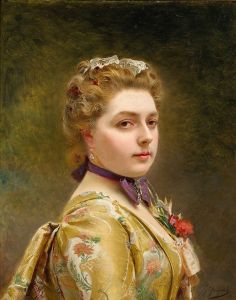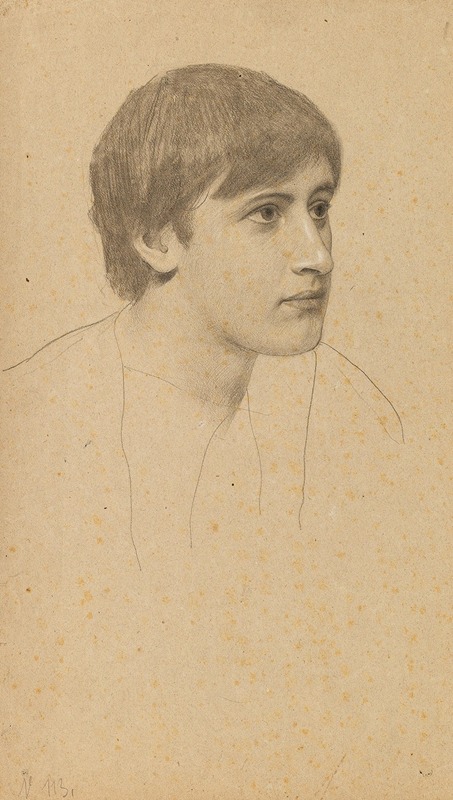
Portrait of a young man
A hand-painted replica of Gustav Klimt’s masterpiece Portrait of a young man, meticulously crafted by professional artists to capture the true essence of the original. Each piece is created with museum-quality canvas and rare mineral pigments, carefully painted by experienced artists with delicate brushstrokes and rich, layered colors to perfectly recreate the texture of the original artwork. Unlike machine-printed reproductions, this hand-painted version brings the painting to life, infused with the artist’s emotions and skill in every stroke. Whether for personal collection or home decoration, it instantly elevates the artistic atmosphere of any space.
"Portrait of a Young Man" by Gustav Klimt is a painting that has intrigued art historians and enthusiasts alike, though specific details about the work remain elusive. Gustav Klimt, an Austrian symbolist painter, was a prominent figure in the Vienna Secession movement, renowned for his distinctive style that often incorporated symbolic and allegorical elements.
Klimt's oeuvre is celebrated for its exploration of themes such as the female form, beauty, and eroticism, often rendered in a highly decorative and ornate manner. His works frequently feature intricate patterns and a bold use of color, with gold leaf being a signature element in many of his paintings. While "Portrait of a Young Man" is less documented compared to his more famous works like "The Kiss" or "Portrait of Adele Bloch-Bauer I," it is believed to have been created during a period when Klimt was deeply engaged in portraiture, capturing the likenesses of various individuals from Viennese society.
The painting is thought to have been completed in the early 20th century, a time when Klimt was at the height of his artistic powers. During this period, Klimt's portraits often depicted his subjects with a sense of introspection and psychological depth, set against richly textured backgrounds. Although specific details about the subject of "Portrait of a Young Man" are scarce, it is consistent with Klimt's approach to portraiture, where the sitter's identity is often secondary to the exploration of mood and atmosphere.
Unfortunately, much of Klimt's work, including "Portrait of a Young Man," was affected by the tumultuous events of the 20th century. Many of his paintings were lost or destroyed during World War II, and the exact whereabouts of this particular portrait remain unknown. It is believed that the painting was part of a private collection before the war, but its fate thereafter is uncertain. The loss of such works has been a significant blow to the art world, as each piece represents a unique facet of Klimt's artistic vision.
Despite the lack of concrete information about "Portrait of a Young Man," Klimt's legacy endures through his surviving works and the influence he has had on subsequent generations of artists. His innovative use of color, form, and symbolism continues to be studied and admired, ensuring that his contributions to the art world are not forgotten. While the mystery surrounding "Portrait of a Young Man" persists, it remains a testament to Klimt's enduring impact and the enduring intrigue of his art.






